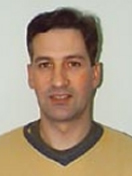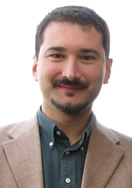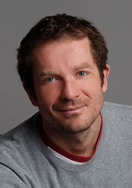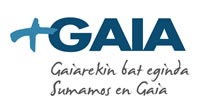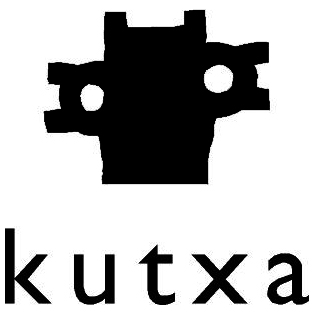|
June 22-26, 2009
San Sebastian, Spain |
|||||||||||||||||||||
|
|
|||||||||||||||||||||
|
ICWE 2009 - Accepted Tutorials
Evaluating the Quality of Web 2.0 Applications [slides]
Monday, June 22, Afternoon @ Small Room Duration Half Day (3 hours long)
Presenter's bio Luis Olsina is an Associate Professor in the Engineering School at the National University of La Pampa, Argentina, and heads the Software and Web Engineering R&D group (GIDIS_Web). His research interests include Web engineering, particularly, Web quality assurance strategies, quantitative evaluation methods, Web metrics and indicators, organizational memories, and ontologies. He earned a PhD in the area of software engineering and a MSE from National University of La Plata, Argentina. In the last 13 years, he has published over 80 refereed papers, and participated in numerous regional and international events both as program committee chair and member. Particularly, he co-chaired the Web Engineering Workshop held in US in the framework of ICSE 2002 (Int’l Conference on Software Engineering); the ICWE 2002 congress (held in Argentina) and ICWE 2003 (held in Spain); in addition to LA-Web 2005 and 2008 editions and the WE track at WWW’06 (held in Edinburgh, UK). He has been an invited speaker at several conferences and professional meetings, and presented tutorials, e.g. in ICWE’05, and graduate courses in different countries. Recently, Luis and his colleagues have co-edited the book titled Web Engineering: Modelling and Implementing Web Applications published by Springer, HCIS Series. TopicMost Web applications, besides the increasing support to functionalities and services will continue aiming at showing and delivering multimedia content. This basic feature that stems from the early Web 1.0 applications is currently empowered by the Web 2.0 and follow-on applications. Web 2.0 applications rely strongly on actual users editing, sharing, collaborating, and performing content tasks in real contexts of use. In this tutorial, we first present the particular characteristics of Web applications, particularly, the so-called Web 2.0 ones. Second, we show how to specify quality requirements for functionalities, services and content for these applications, employing a minimalist and integrated approach. By reusing and extending the ISO 9126-1 quality models’ characteristics, we discuss the need of modelling and adding the content characteristic for evaluating the quality of information. Specifically, we argue that the internal and external quality models with the set of six characteristics, i.e. functionality, usability, reliability, efficiency, maintainability and portability, and their sub-characteristics respectively, are not sufficient to specify Web applications’ information quality requirements. As a consequence, we propose to include in both models the content characteristic and its sub-characteristics, i.e. content accuracy, content suitability, content accessibility, and content legal compliance. Third, we give clues how these characteristics and attributes can be measured and evaluated regarding our measurement and evaluation approach and different methods. In order to illustate the main concepts, an example on the content dimension is developed.
Practical Accessibility: A Web Accessibility Primer
Tuesday, June 23, Morning @ Small Room Duration Half Day (3 hours long)
Presenters' bio Simon Harper is the Research Lead for the HCWLab and has been involved in novel independent research for a number of years being the principle investigator on a diverse portfolio of funded, and pilot research projects. He has worked on numerous accessibility related projects since 1999 winning the ADDW IBM Research prize and the ACM Doug Engelbart prize. He is a member of the W3C User Agent Working Group and has been the General and Programme Chairs for a number of conferences as well as founding the W4A Conference on Web Accessibility (2004-2009). Finally, he has delivered invited research talks for IBM Tokyo, Fujitsu Labs Europe, and the EPSRC Digital Economy Inclusion Cluster along with a Keynote at WebMedia 2008 in Brazil. Simon's Bibliography can be found at: hcw.cs.manchester.ac.uk. Yeliz Yesilada is a Research Associate (RA) in the HCWLab working on accessibility, usability, and Mobile user interfaces, winning a Royal Academy of Engineering Travel Grant. She has worked on the COHSE project funded by SUN Microsystems and the Knowledge Web project funded by the European Union. She was a key participant in the DANTE project which showed how Semantic Web technologies could be used to enhance experiences of visually disabled users on the Web. She is also the lead researcher on the EPSRC funded RIAM project. She is a founder of W4A Conference on Web Accessibility (2004-2009) and has served on, and chaired, many conference committees. She is an author of the book 'Web Accessibility: Foundations for Research' published by Springer and a member of W3C's Mobile Web Best Practices Group (MWBP) and Education and Outreach Group (EOWG) where she is an editor of two standardisation documents. Yeliz's Bibliography can be found at: hcw.cs.manchester.ac.uk. TopicWeb Accessibility aims to help people with disabilities to perceive, understand, navigate, interact, and contribute to the Web. There are millions of people who have disabilities that affect their use of the Web. Currently most Web sites have accessibility barriers that make it difficult or impossible for many people with disabilities to use these sites. This half day tutorial provides a basic training to enable Web engineers to remove these barriers. The tutorial is split into two parts of equal theoretical and practical training. In the first part you will learn how to build accessibility into your developments from the outset as part of the general development life-cycle; including understanding current research directions. This will involve lessons in: 'Understanding disability and thinking accessibly'; 'Practical engineering'; 'An Orientation around the Web Content Accessibility Guidelines'; 'Eclipse development Frameworks'; and 'Tools and techniques for accessible development'. In the second part you will learn about accessibility validation and repair as part of the debugging cycle along with new accessibility issues. This will involve lessons in: 'Debugging, validation, repair, and EARL', 'aDesigner and other debugging tools', 'Web 2.0, AJAX, Flash, and ARIA', and 'The Mobile Web and other mainstream technology'.
Model-Driven Development of Service-Oriented Systems [slides]
Tuesday, June 23, Afternoon @ Medium Room Duration Half Day (3 hours long)
Presenter's bio Nora Koch is a research assistant at the Ludwig-Maximilians-Universität (LMU) of Munich and works as project manager at Cirquent GmbH, Germany. She studied Computer Science at the Universidad de Buenos Aires, Argentina and received her PhD degree in Computer Science from the LMU in 2000. She has been involved in several national and European projects, and has been working on the SENSORIA project (www.sensoria-ist.eu) since 2005, which is concerned with the development of a rigorous engineering approach for service-oriented software. Nora is the leader of the Web Engineering Group at the LMU and responsible for the development of the UML-based Web Engineering (UWE) approach. Her main research interests focus on methods for the model-driven development of web applications, RIAs and service-oriented systems. Nora organized several web engineering events, like ICWE 2004, the MDWE workshops since 2005 and the MDWEnet initiative. She is a member of the IEEE, ISWE, the German Society of Informatics and the editorial board of the Journal of Web Engineering. Further information about projects, presentations and the list of her over 90 publications are available at www.pst.ifi.lmu.de. TopicThe widespread success that the service-oriented paradigm is experiencing today can be witnessed by the effort and resources that many large companies are investing to promote service delivery and use on a variety of computing platforms, mostly through the Internet in the form of web services. The expectation is that there will be a plethora of new services supporting e-government, e-business, e-science, and many other areas, promoting a rapid evolution of the information society. The specification and (re)use of these services, in particular the orchestration of services requires a well-founded engineering approach. In this tutorial an overview of an approach for the development of service-oriented software will be presented, that has been developed within the scope of the EU project SENSORIA. It encompasses the whole development process, from the specification of service-oriented systems in high-level languages, to deployment, with a particular focus on qualitative and quantitative analysis techniques, and automatic transformations to generate both suitable input for the analysis tools and executable services. In depth, the presentation will address the modeling aspects, which is the basis for the early analysis and model transformations in the model-driven development process of service-oriented computing. The UML extension called UML4SOA will be introduced, which enables modeling of both the structural and the behavioral aspects of service-oriented systems providing constructs for services, service providers and description for the specification as well as service interactions, long-running transactions, and event handling. To facilitate the practical application of the results, an open source Eclipse and service-based development environment is presented that supports the new language primitives and integrates analysis tools, model transformations and deployment functions for the model-driven development. The attendees of the tutorial will gain knowledge of different well-founded techniques and methods for the development of service-oriented systems.
From SOA to REST - Designing and Implementing RESTful Services [slides]
Monday, June 22, All Day @ Medium Room Duration Full Day (6 hours long)
Presenters' bio Cesare Pautasso is assistant professor in the new Faculty of Informatics at the University of Lugano, Switzerland. Previously he was a researcher at the IBM Zurich Research Lab and a senior researcher at ETH Zurich, where he earned his Ph.D. in computer science in 2004. His research focuses on building experimental systems to explore the intersection of model-driven software composition techniques, business process modeling languages, and autonomic/Grid computing. Recently he has developed an interest in Web 2.0 Mashups and Architectural Decision Modeling. He is the lead architect of JOpera, a powerful rapid service composition tool for Eclipse. His teaching and training activities both in academia and in industry cover advanced topics related to Web Development, Middleware, Service Oriented Architectures and emerging Web services technologies. For more information refer to www.pautasso.info. Erik is working in UC Berkeley's School of Information. He has been working on various parts of Web architecture for the past ten years. He first focused on XML and associated technologies, with a focus on data models and representations. For the past two years and as the technical director of the iSchool's Information and Service Design Program (ISD), his focus has shifted to loose coupling and service design. Erik is also very interested in "Location and the Web", the question of how the Web as a hypermedia system should be extended to support location as a first-class concept. TopicThe primary goal of this tutorial to close the gap between the high-level concept of Service-Oriented Architecture (SOA), and the question of how to implement such an architecture once services have been identified. Colloquially, it is often assumed that "services" in a Web-oriented are implemented as "Web services", and these are often exclusively perceived as using the SOAP stack of protocols. Our goal is to describe that "Web services" can also use other technologies, such as RESTful implementations on top of HTTP. Furthermore, we will explain how a disciplined process can lead from the business level, which is mainly about identifying services on an abstract level, to an IT architecture, and that it is important to not impose architectural constraints (such as defining service in a function-oriented way rather than in a resource-oriented way) too early in the process. Web Services have been of increasing interest in the past years. While "Web Services" were first defined as machine-accessible services based on Web technologies, the term quickly was perceived as exclusively referring to SOAP-based services, which mirror the traditional IT integration style of distributed objects with messaging technologies layered on top of Web technologies. This tutorial focuses on an alternative approach towards the design and implementation of Web Services, based on the architectural style of the Web itself, Representational State Transfer (REST). Thus, the tutorial learning objectives specifically include giving an in-depth understanding on how the two different styles of Web Services compare, and why the decision of SOAP vs. REST is fundamental and needs to be made very early in any SOA project. We focus on the question of how to do SOA with REST, and do so by explaining and highlighting the fundamental differences between the more tightly coupled "integration" style of distributed objects, and the more loosely coupled "cooperation" style of REST. Thus, attendees will gain a new perspective that highlights the importance of following Web principles to support the design of Web Services and learn why not all Web Services are made equal and that only RESTful ones are really "of the Web", whereas others are just implemented "on the Web". |
|||||||||||||||||||||
|
(c) 2008-2009 by International Society for Web Engineering e.V. Designed by Sandy Pérez & Cristóbal Arellano |
|||||||||||||||||||||
